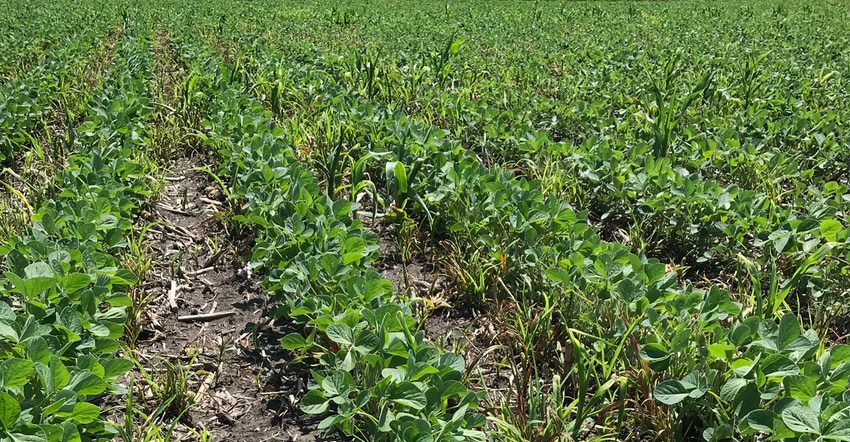October 27, 2021

The derecho left many Iowa farmers with significant volunteer corn this growing season. And unfortunately, some will be facing a similar situation for 2022 after late August storms flattened fields. This article will focus on managing volunteer corn in 2022 soybeans.
While corn damaged during early reproductive stages may have kernels with low survivability over the winter, corn killed in late August will have kernels likely to survive the winter and germinate next spring. Losses of only a few bushels per acre can result in significant volunteer corn populations. Volunteer corn ranging from 800 to 13,000 plants per acre can cause yield losses up to 54% in soybean and up to 13% in corn, according to research conducted at South Dakota State University, University of Minnesota and University of Nebraska-Lincoln. In addition to yield losses, volunteer corn can allow corn rootworm and corn pathogens to persist and cause issues when rotating back to corn in future years.
Fall management
Much debate exists over the effectiveness of tillage in managing volunteer corn. Fall tillage operations to size residue may increase seed-soil contact and promote germination of corn seeds this fall; seed left on the surface or on the cob is less likely to germinate due to poor soil-seed contact.
However, seed left on the surface is also more vulnerable to seed predation. For some farmers, grazing fields or baling some crop residue is an option that will help reduce volunteer corn in fields with significant lodging. Hopefully, farmers are noticing that some volunteer corn has already germinated this fall with the rainfall and warm temperatures we’ve experienced.
Spring preplant and preemergence options
Tillage, non-selective herbicides such as paraquat, and Group 1 herbicides (clethodim, etc.) can be used to burn down or suppress volunteer corn that emerges before crop planting. If conventional corn was grown in 2021, glyphosate would be an additional effective burndown herbicide next spring. While preplant tillage can kill emerged plants, it will likely break up ears and stimulate corn germination and emergence. In addition to burndown herbicide options prior to crop emergence, some soybean residual herbicides may provide some additional suppression of volunteer corn. Regardless of early spring management, the majority of volunteer corn will emerge after crop planting in the spring.
In-season management in 2022
Fields that will be planted to a soybean variety with glufosinate resistance can be treated with Liberty to control volunteer corn if the corn grown in 2021 was conventional or Roundup Ready only. Two applications of glufosinate (32-43 fluid ounces per acre) are recommended in LibertyLink soybean. Group 1 herbicides will be the only option for controlling volunteer corn in soybean if the 2021 corn hybrid was tolerant to both glyphosate and glufosinate.

To reduce early-season crop competition, it is recommended to apply Group 1 products when emerged volunteer corn is 12 inches or less. Consult the product label for appropriate adjuvants (NIS, COC, MSO) to enhance the activity of these products for controlling volunteer corn in soybean.
HG1 antagonism with broadleaf herbicides
A lesson learned from 2021 is the dramatic reduction in efficacy of Group 1 products when tankmixed with partners like 2,4-D (Enlist) or dicamba (XtendiMax or Engenia) (see Figure 1). Antagonism can be reduced by applying a higher rate of the grass herbicide, or avoided entirely by applying the grass herbicide one or more days before, or seven days after, the broadleaf herbicide. As a result of antagonism issues, many derecho-affected fields required an additional POST pass containing only a Group 1 product in 2021.
In the unfortunate situations where lodged corn creates a significant potential for 2022 volunteer corn, putting a plan in place now while 2021 corn hybrid information is still fresh on the mind will help reduce the inconvenience of this issue in 2022.
Anderson is an Extension field agronomist in central Iowa and an Extension field specialist at Iowa State University Extension and Outreach.
About the Author(s)
You May Also Like






